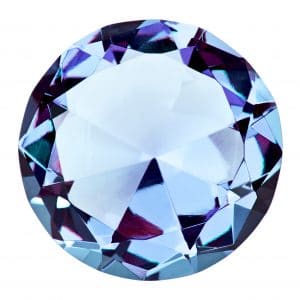
Every now and again you stumble across one in this business…… a diamond that wants to stay coal!
In medieval times alchemists applied their knowledge and wizardry in the quest to transform base metals into gold. Modern day pension fund managers find themselves in a similar predicament in their attempt to deliver what often seems to be the impossible in terms of the provision of sustainable retirement income for scheme members. There is no mercurial way to run a pension fund; no magic dust that can be sprinkled on the fund to make it perform better; there is however choice as to where assets are allocated.
Portfolio Diversification
The diversification of a portfolio can be achieved by investing in a range of classes that have a negative correlation with each other, such as equities, bonds, and property. The lower the correlation between asset classes in the pension portfolio, the more the assets will complement each other and therein lead to a reduction in the portfolio risk.
While Europe holds its breath in anticipation of an inflationary cycle, managers are considering investment in commodity funds as a long-term hedge against rising prices. The continuous increase in the world population coupled with the scarcity of natural resources has brought commodities back into demand as a favored asset class.
Investment strategy
Trade in commodities such as copper and silver is triggered by changes in the spot price. The spot price is the price quoted for the purchase or sale of a particular commodity at a specified time. In order to avoid the risks associated with price fluctuations, buyers will use a futures contract wherein an agreement is made to purchase a set amount of a commodity at a predetermined price and date. On the other hand side of the coin, sellers will try to lock-in a price for their products. The active commodity trader will sell future contracts as they near their expiry date and buy new ones with a spot price further from expiry. Any gain or loss in this position is related to the spread between the sell price and the new spot price.
Commodities are not a single asset class; to this end managers invest across a range of sectors including energy, base metals, precious metals, and soft commodities such as coffee, cocoa and sugar. Some fund managers prefer investment in equity-based natural resources, whereas others opt for commodity-related companies such as plastic producers. Investment in a blend of physical commodities and related equities can thus offer investors the best of both worlds and help diversify the risk.
Some pension funds prefer to adopt a ‘buy-and-hold’ position when selecting assets for long term returns. A passive exposure to commodities delivered successful results from 2002 until late 2007, when it was possible to capture a broad upswing in the market. However, the sustained growth in the sector came to an abrupt halt towards the end of 2008 resulting in a flight to safety in the financial markets.
Alternatively, the active manager would argue that the volatility of commodity makes them less attractive as ‘buy-and-hold’ investments. They maintain that the cyclical nature of commodities results in them being a momentum trade and that any passive diversification benefits represent a significant opportunity loss.
Through the use of derivative instruments, managers may employ investment strategies that involve short as well as long positions, allowing them to produce positive returns in uncertain markets. Ultimately, the aim is to provide a high rate of return, while also managing market and operational risks to protect capital from the volatility inherent in the asset class
Pension fund management expertise
The level of pension fund management expertise is of great importance in the quest for profitability. It is vital that the commodity manager has considerable experience and understanding of the fundamental drivers of the commodities in which they trade. In addition, managers need a solid grounding in trading instruments and techniques in order to develop their own investment style and philosophy. Some managers like to focus more on the area of supply and demand, whereas others will be more concerned with market flows or technical analysis.
When analyzing commodity producers, managers will consider the debt/equity ratios on company balance sheets. The more leveraged companies tend to perform better in a rising commodity market due to the fact that their margins will rise; however this position is not sustainable in a market downturn. Another factor to consider is whether companies are low or high-cost producers, as this will impact their earnings. Low-cost producers tend to be less affected by commodity price fluctuations and thus have an advantage over higher-cost producers on the downside.
In order to asses which companies are most suitable for investment, managers use the net present value analysis (NPV) to project future cash flows. Key assumptions such as commodity prices, exchange rates, production targets, and operating costs are built into the equation so as to test company valuations under various market conditions.
Surge in global demand
The emerging markets continue to be a driving force with 55% of most commodities being consumed by these countries. China in particular has a significant requirement for the supply of raw materials in order to fuel its explosive growth. Australia with its abundance of metals, coal and food has been the immediate beneficiary. However, recent flooding has presented Australia with a huge challenge in terms of the extraction of both copper and coal, and thus restricted supply. When the water finally recedes, it will take a long time to repair the damage to existing mines. Such events inevitably help sustain the upward pressure on commodity prices.
The asset allocation strategy of a fund depends on the manager’s objectives, risk appetite and time horizons. Given the global squeeze on essential resources, the opportunity to reduce portfolio risk through the purchase of commodities will appeal to the alchemist in all pension fund managers.